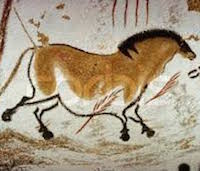Thematic essays overview
Earlier prehistory

Since the early 20th century, and especially during the last few decades, interdisciplinary research has strengthened the evidence that during earlier prehistory (35,000–9,000 BP) people observed certain celestial phenomena and reflected about the spatiotemporal structure of the world they perceived...
Read more about Earlier prehistory...
Later prehistoric Europe

The later prehistoric period within Europe, and particularly around the Atlantic façade, marks the widespread construction of large, evidently communal, structures built predominantly of earth, timber and/or stone. The vestiges of many earthworks and stone monuments dating to this period remain...
Read more about Later prehistoric Europe...
Pre-Columbian America

Broadly speaking, our understanding of indigenous astronomical knowledge in the Americas through the ages is derived from historical accounts by Spanish chroniclers, reports by ethnographers and anthropologists working among native groups during the last 150 years, several well-presented archaeological...
Read more about Pre-Columbian America...
Indigenous uses of Astronomy

In one sense, all cultural uses of astronomy are indigenous, whether past or present. In practice, though, the term ‘indigenous’ is commonly taken to apply only to people outside the ‘Western’ framework of thought, given the global nature of modern science. This introduces a dichotomy...
Read more about Indigenous uses of Astronomy...
Ancient and medieval Far East

Geologically, China occupies a large and central position in East Asia. It is one of the first places in the world where agricultural civilization originated, and it remained an agriculturedominated culture until the end of the imperial period in 1912. For this reason, Chinese people became...
Read more about Ancient and medieval Far East...
India

Our understanding of archaeoastronomical sites in India is based not only on a rich archaeological record and texts that go back thousands of years, but also on a living tradition that is connected to the past. Conversely, India has much cultural diversity and a tangled history of interactions with neighbouring...
Read more about India...
Mesopotamia and the Middle East

The earliest known written sources dealing with astronomy come from the regions of ancient Assyria and Babylonia located in what is now Iraq and its neighbours. These sources are written in the Akkadian language using cuneiform writing on clay tablets. Because clay is a non-perishable material,...
Read more about Mesopotamia and the Middle East...
Ancient Egypt

In what follows we shall not deal with the history of mathematical or theoretical astronomy as a natural science, which is hard to trace in ancient Egypt, but rather with the cultural aspects of the discipline. These are the main focus of archaeoastronomy, an interdisciplinary subject in which the powerful...
Read more about Ancient Egypt...
The Classical World

What we identify here as the ‘classical world’ is better defined culturally than geographically. Chronologically, it spans the Greek and Italic societies of the Iron Age (8th to 4th century BC) and the Hellenistic and Roman civilizations, finishing with the end of the Roman empire. In geographical...
Read more about The Classical World...
Islamic astronomy

In the time interval between Ptolemy (2nd century AD) and Copernicus (16th century), the major developments in observational and theoretical astronomy took place from North Africa to Central Asia—during late Antiquity, and then in pre-Islamic and finally Islamic societies. The main advances happened...
Read more about Islamic astronomy...
Medieval astronomy in Europe

We can define the astronomy of medieval Europe as those astronomical practices that took place in Europe from the fall of the Western Roman Empire in the late 5th century to the Renaissance. That said, it would be helpful to begin to spell out the geographic, chronological, and cultural limits...
Read more about Medieval astronomy in Europe...
Astronomy from the Renaissance to the mid-twentieth century

The period from the European Renaissance to the middle of the 20th century was an extremely rich one for the history of astronomy. The heliocentric paradigm of Copernicus (mid 16th century) followed by the techno-scientific revolution of Galileo’s refracting...
Read more about Astronomy from the Renaissance to the mid-twentieth century...
The development of radio astronomy

Radio astronomy has been a very instrument-driven science. The great discoveries of radio astronomy often happened soon after a new radio telescope was put into operation. Many of these discoveries have been serendipitous but contributed to the rapid progress in modern astronomy. Thus...
Read more about The development of radio astronomy...
Applied astronomy in modern times

The development of astronomical knowledge in modern times has forged strong connections with technology and led to the development of a variety of new applications of that knowledge. At the same time, many of the social uses of astronomy are, essentially, unaltered since ancient times:...
Read more about Applied astronomy in modern times...
Space Heritage

The term ‘Space heritage’ can have several connotations, of which the commonest perceived could be summarised as: (1) heritage related to the process of carrying out science in space; (2) heritage related to manned space flight/exploration; and (3) human cultural heritage that remains off the surface...
Read more about Space Heritage...
‘Windows to the universe’: Starlight, dark-sky areas and observatory sites

The sky, our common and universal heritage, is an integral part of the environment perceived by humanity. Starting from this general idea, the Declaration in Defence of the Night Sky and the Right to Starlight, adopted in 2007, states that “an unpolluted night sky that allows the enjoyment and...





